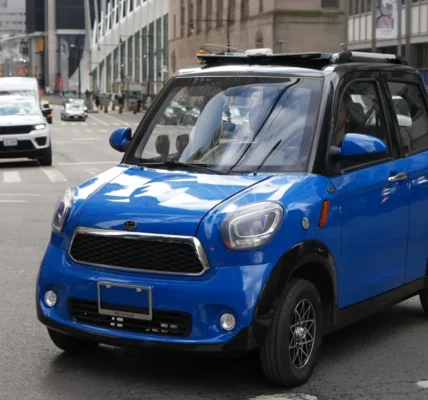Fleet decision makers are having to deal with an entirely different environment in the US, in the face of disappearing EV incentives, tariffs on foreign imports, and the dilution of vehicle emissions legislation.
The new administration made no effort to hide its disdain for its predecessor’s Inflation Reduction Act, which played a pivotal role in the uptake of EVs through the $7,500 federal Clean Vehicle Tax Credit and leasing incentives.
Tax credits and tariffs
Under the “Big Beautiful Bill” passed by Congress and now being scrutinised in the Senate, the tax credit for new EVs would phase out after 2026.
The administration has also challenged California’s emissions waiver, including the state’s plan to end the sale of gasoline-only vehicles by 2035, and attempted to withdraw federal financial support for charging infrastructure.
Moreover, the introduction of 25% tariffs on automotive imports unduly impacts EVs, with the vehicles and their traction batteries more likely to be manufactured overseas than their gasoline equivalents.
The President appears intent on levelling the playing field between powertrain technologies with his executive orders and budget, but despite his “drill, baby, drill” rhetoric, has not signed the death warrant of EVs.
Companies remain committed to EVs
His policies may slow down EV adoption, especially in the price-sensitive retail sector, but multiple reports indicate that large companies remain committed to their sustainability goals, which include electrifying their fleets.
Research by Cox Automotive last year found that only 14% of fleets operated EVs, but the majority expected to have some battery-powered vehicles on their books within five years. The study said fleets with both gas and electric vehicles reported higher satisfaction with their EVs and said they had a 90% likelihood of acquiring additional EVs in the next acquisition cycle.
Zo Rahim, senior manager of Research and Market Intelligence at Cox Automotive, said: “In many ways, electric vehicles can be an ideal solution for many fleet operations, which often have set routes of known distances, vehicles that routinely overnight in the same location, and operations that prioritize the cost of ownership. The fleet business is significant in the U.S. market, and we expect the EV share of the fleet market to expand in the coming years.”
Fleets pursuing climate goals
Element Fleet Management already has 101,000 electric or hybrid vehicles on its 1.5 million vehicle fleet, and has set an ambitious goal to transition 350,000 client vehicles to electric by 2030.
“With the right tools, insights, and support, we are helping to empower our clients as they reduce emissions, lower costs, and pursue their climate goals,” said Sheri McGrath, VP of Sustainability at Element.
Wheels sees growing green momentum
The most recent Sustainability Benchmark Report by Wheels identified growing fleet momentum towards lower emission solutions, although it warned that wider industry trends, such as the softening of EPA standards and year-over-year waning in some electrification metrics could influence the pace of green progress.
“This doesn’t indicate a shift away from environmental sustainability; rather, it shows that companies are taking a more measured, informed approach,” said the report.
Earlier this month, 15 delegates from the NAFA Fleet Management Association went to Washington to present the practical needs of fleets to lawmakers, raising issues such as EV incentives, and charging infrastructure funding.
Large organisations certainly cannot ignore their fleet emissions – Security and Exchange Commission reporting requirements now mandate that publicly traded companies must disclose their greenhouse gas emissions to stakeholders.
Wheels says transitioning to battery electric vehicles is the number one strategy for fleets to achieve more sustainable operations, although hybrid and plug-in hybrid vehicles also feature as part of solutions.
EV sales to plateau this year
J.D. Power forecasts that EV sales in the US will plateau this year, accounting for about 9.1% of new vehicle sales, and representing about 1.2 million registrations. This is the same share they achieved in 2024, with New York, Florida and Colorado joining California as EV hotspots.
Longer term, J.D. Power projects that the EV market is on track to account for about a 26% retail share by 2030, approximately half of the market share targeted by the Biden administration. Its data shows that by the end of last year, the average cost of a battery electric vehicles was $1,000 cheaper than a comparable gas-powered vehicle, thanks to federal and state incentives, as well as a raft of new mainstream models (the first BEVs were largely premium cars with premium prices). This price advantage would disappear with the withdrawal of the Clean Vehicle Tax Credit, and is likely to have a negative impact on sales.
Optimists might argue, however, that the landscape for EVs in the US may not be as gloomy as headlines have painted. Last week, a judge blocked President Donald Trump’s administration from withholding about $1 billion in funds awarded to 14 states to develop EV charging infrastructure, and California Governor Gavin Newsom has vowed to challenge President Trump’s resolution to repeal the state’s mandate that at least 80% of new vehicles sold have to be electric in 2035.
Fleets need consistency
But the on-off nature of EV support and counter-EV measures does hinder fleet planning.
“Businesses — both manufacturers and fleet operators — need policy certainty as they plan to build and adopt cutting edge, cost-saving vehicles,” said Michael Kodransky, senior director of transportation, Ceres, a nonprofit advocacy organization working to accelerate the transition to a cleaner economy. “In this period of uncertainty, businesses that have committed to transitioning to clean fleets must redouble their efforts to ensure they can access these innovative vehicles.”
He said that in 2020 the average price of an EV was 42% higher than the average price of a car – at the end of 2024 the differential had closed to 12%.
“Despite current market and policy hurdles, leading companies are staying the course in their commitment to transitioning to EVs over time. For businesses looking to reduce costs, improve efficiency and stay ahead of market shifts, investing in fleet electrification isn’t just about sustainability — it’s a strategic business decision,” said Kodransky.








